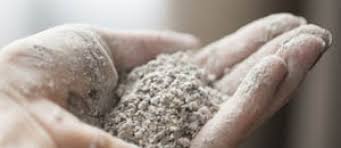SILICA
Silica has been highlighted in recent times and everyone needs to understand the risks.
Crystalline silica (silica) is found in sand, stone, concrete and mortar. It is also used to make a variety of products including composite stone used to fabricate kitchen and bathroom benchtops, bricks, tiles and some plastics. When workers cut, crush, drill, polish, saw or grind products that contain silica, dust particles are generated that are small enough to lodge deep in the lungs and cause illness or disease including silicosis.
Silica is one of the most abundant minerals found in the earth’s crust and is used in many products across a variety of industries and workplaces. Crystalline silica is most dangerous to health when dust is generated, becomes airborne and is then inhaled by a worker/person.
Examples of work activities that can generate respirable silica dust particles include:
- during fabrication and installation of composite (engineered or manufactured) stone countertops
- excavation, earth moving and drilling plant operations
- clay and stone processing machine operations
- paving and surfacing
- mining, quarrying and mineral ore treating processes
- tunnelling
- construction labouring activities
- brick, concrete or stone cutting; especially using dry methods
- abrasive blasting (blasting agent must not contain greater than 1 per cent of crystalline silica)
- foundry casting
- angle grinding, jack hammering and chiselling of concrete or masonry
- hydraulic fracturing of gas and oil wells, and
- pottery making
- ABN 38 075 202 318
- Licensed asbestos assessor Peter Dickinson #2317204 Workplace Health and Safety QLD
- QBCC – Contractor License. Kwik Lift Pty Ltd #731057
- Waste Transport License (EPSX) # ENRE01118010
- Accredited ISO 45001 (Demolition and Asbestos Services)
- Asbestos Licensed A-Class Removalist #2301702 Workplace Health and Safety QLD
- Demolition Work License # 2316182
- Workcover QLD Insured #WFA970674618
- QLD Labour Hire License LHL-02878-S2D8G
SITE LINKS
COMPANY INFORMATION
Depot Address
OPENING HOURS
- Mon - Fri
- -
- Sat - Sun
- Closed












